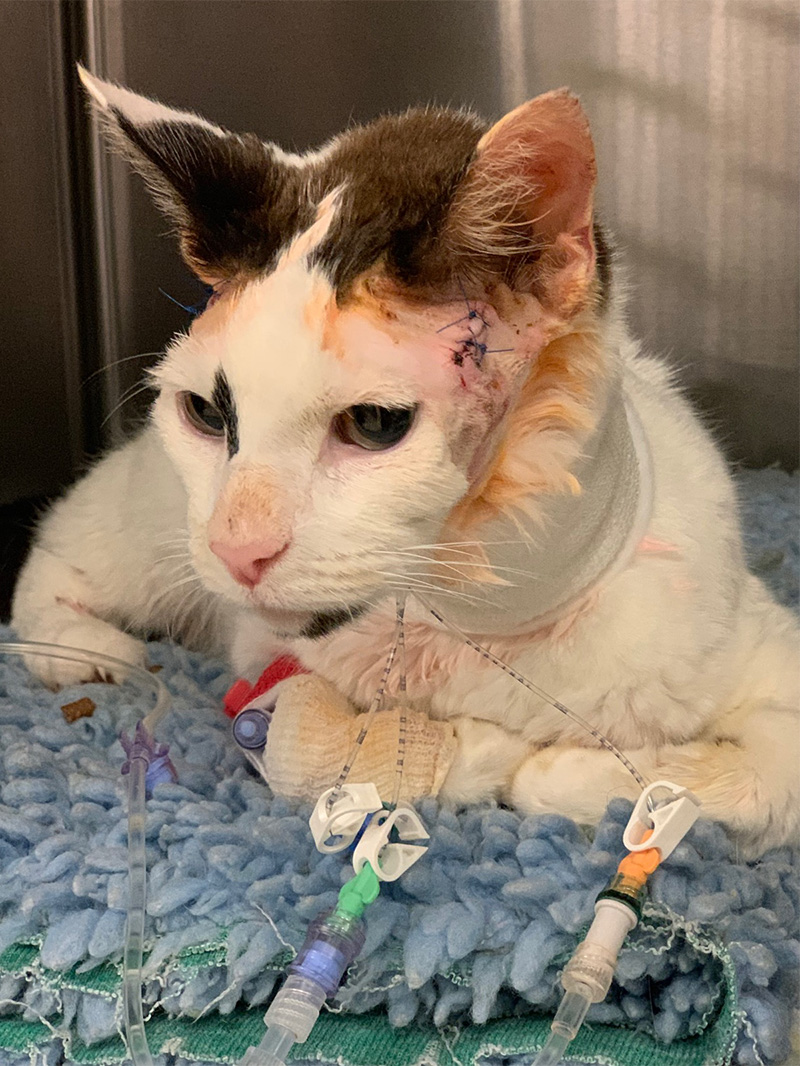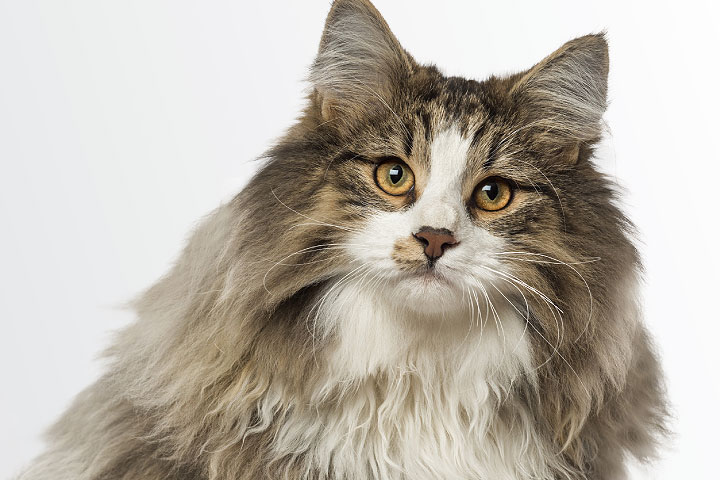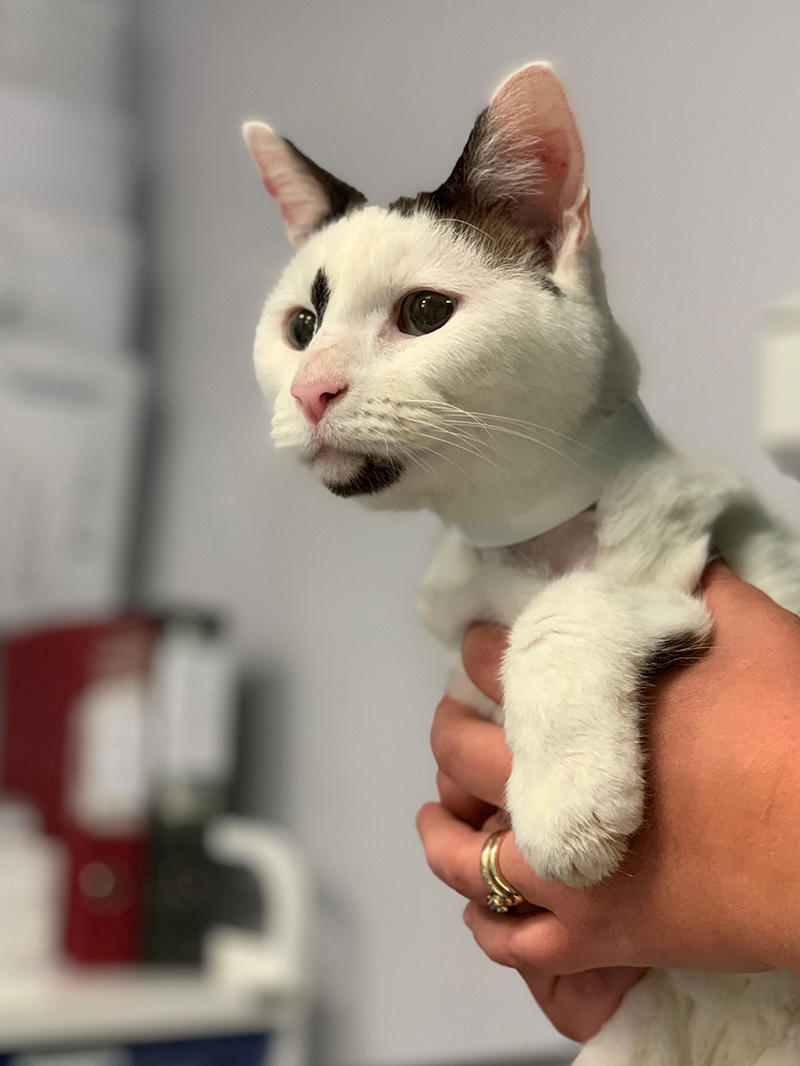acromegaly in cats uk
Acromegaly is a relatively rare condition caused by excessive hormone production in the brain or in mammary gland breast tissue. The catabolic actions of growth hormone include insulin antagonism and lipolysis.

Pdf Acromegaly In A Non Diabetic Cat
Recent studies have shown a significant proportion of problem diabetic cats to have underlying acromegaly hypersomatotropism.
. Most cats see their diabetes cured also with a return to normal numbers and insulin no longer needed. Of 6090 mlkg in a dog and 4060 mlkg in a cat although it is rare to use this as the initial dose especially in cats. However a systematic review found.
It is more common in cats than dogs. Prevalence of acromegaly amongst diabetic cats in North America and the UK was found to be around 1 in 4 diabetic cats seen in primary practice. In cats it is due to GH-secreting tumors of the anterior pituitary.
Acromegaly was thought to be a rare condition but a recent UK study of diabetic cats with poor to adequate glycemic control showed that nearly a third of them showed signs of acromegaly. The prevalence amongst non-diabetic cats is currently unknown although these cats would be expected to become diabetic in the long-run. The physical signs of acromegaly can be difficult to see and the changes come on very slowly so an owner seeing their cat every.
Recognising this syndrome in these cats will be key to successfully managing the concurrent diabetes. Acromegaly is a relatively rare condition caused by excessive hormone production in the brain or in mammary gland breast tissue. Some patients are textbook cases responding very well to insulin administration.
Some cats will show very few symptoms even when the disease is established. Acromegaly is a syndrome in cats caused by a tumor in the brain specifically the pituitary gland that secretes an excess of a hormone Growth Hormone. Affected cats can develop gradual changes in their appearance but because the disease develops over a long period of time owners may not notice any problems.
So as many as 1 in 3 hard-to-control diabetic cats may have acromegaly. Hypersomatotropism refers to the pathologic overproduction and subsequent secretion of growth hormone gh which leads to the clinical. Signs related to diabetes mellitus are typically the first clinical signs noticed.
One of the earliest signs of Acromegaly is a difficult to regulate diabetic cat - one that appears to be well-regulated for a time but continually goes off the rails for no discernable reason and requires increasing amounts of insulin if not necessarily always at very high doses to become regulated again. Others prove to be more challenging. If too much growth hormone is produced it causes many tissues in the body to grow bigger causing problems for the cat.
Growth of the extremities skull and muscles occur in some cats. Acromegaly In Cats Uk Acromegaly is a disease that progresses slowly and symptoms will take some time to start showing. Testing confirmed acromegaly in over 90 of those.
Acromegaly should be considered as a possible cause of difficult to regulate and high dose diabetic cats. Cardiomegaly and azotemia develop late in the disease. The estimated prevalence of acromegaly in cats in the UK is between 1 in 800 to 1 in 1000.
Syndrome due to persistent excessive growth hormone gh secretion from pituitary adenoma pituitary gland. Acromegaly In Cats The Veterinary Nurse Thus using the square-cube law seems to provide a ballpark figure when attempting to determine a scaled-up size. Acromegaly In Cats Uk Acromegaly is a disease that progresses slowly and symptoms will take some time to start showing.
According to screening studies performed in the UK that measured IGF-1 concentrations in a large number of diabetic cats as many as 26-32 were determined to have hypersomatotropism-induced DM. The RVC team was the first in the UK to treat cats with acromegaly hypersomatotropism and is now also routinely performing hypophysectomy in dogs and the occasional cat with pituitary-dependent Cushings syndrome hyperadrenocorticism. The veterinary nurse plays a key role in educating owners about acromegaly and the management of affected cats.
One study has shown that one in three diabetic cats in North America suffers from acromegaly induced diabetes¹. Hypophysectomy for acromegaly in cats. The normal range is 2126 mmolL 88107 mgdL 4352 mEqL with levels greater than 26 mmolL defined as hypercalcemia.
This article describes the pathophysiology and diagnosis of acromegaly in cats and what treatment options are currently available. Acromegaly in cats is a fairly uncommon but serious feline diseaseAcromegaly can have a significant impact on your cats health is most often associated with. Acromegaly is an endocrine disease caused by a tumour in.
So the cat is cured of Acromegaly once the tumour is removed. These effects can be divided into two major classes. Another that one in four diabetic cats in the UK is suffering from the same².
Acromegaly in cats uk acromegaly is a disease that progresses slowly and symptoms will take some time to start showing. Feline acromegaly is a disease characterized by excessive growth hormone secretion leading to a wide array of clinical signs caused by the hormones effects on multiple organ systems. The disease is therefore likely currently underdiagnosed.
The estimated prevalence of acromegaly in cats in the uk is between 1 in 800 to 1 in 1000. Acromegaly may be suspected in a cat who is persistently hyperglycemic despite daily insulin injections especially if it is accompanied by other symptoms such as weight gain 1 along with ruling out other conditions which also cause uncontrolled diabetes is important hyperthyroidism hyperadrenocorticism. Acromegaly usually affects middle-aged or older cats 8-14 years and males more often than females.
Acromegaly is caused by the production of too much growth hormone which as its name suggests stimulates body tissues to grow. Acromegaly is caused by excess secretion of growth hormone GH in adult animals. In addition improvement to some organs damaged by acromegaly may be seen especially concerning damage to the heart.

Fred The Wonder Cat Arun Veterinary Group

Pioneering Hypophysectomy Treatment Reaches 100 Case Milestone

Acromegaly In Cats The Veterinary Nurse

Woman Begs People To Stop Blaming Her For Her Fat Cat S Massive Size Metro News

The Management Of Feline Hypersomatotropism Hs Acromegaly

Meet The Handsome Senior Cat With Cerebellar Hypoplasia And Acromegaly Who Found A Wonderful Home After His Owner Passed Away Senior Cat Cats Emergency Vet

Acromegaly In Cats The Veterinary Nurse

Acromegaly In Cats The Veterinary Nurse

Woman Begs People To Stop Blaming Her For Her Fat Cat S Massive Size Metro News

Woman Begs People To Stop Blaming Her For Her Fat Cat S Massive Size Metro News

Acromegaly In A Non Diabetic Cat

Pioneering Hypophysectomy Treatment Reaches 100 Case Milestone

Paws Of An Overtly Acromegalic Cat This Figure Shows A Cat With Download Scientific Diagram

